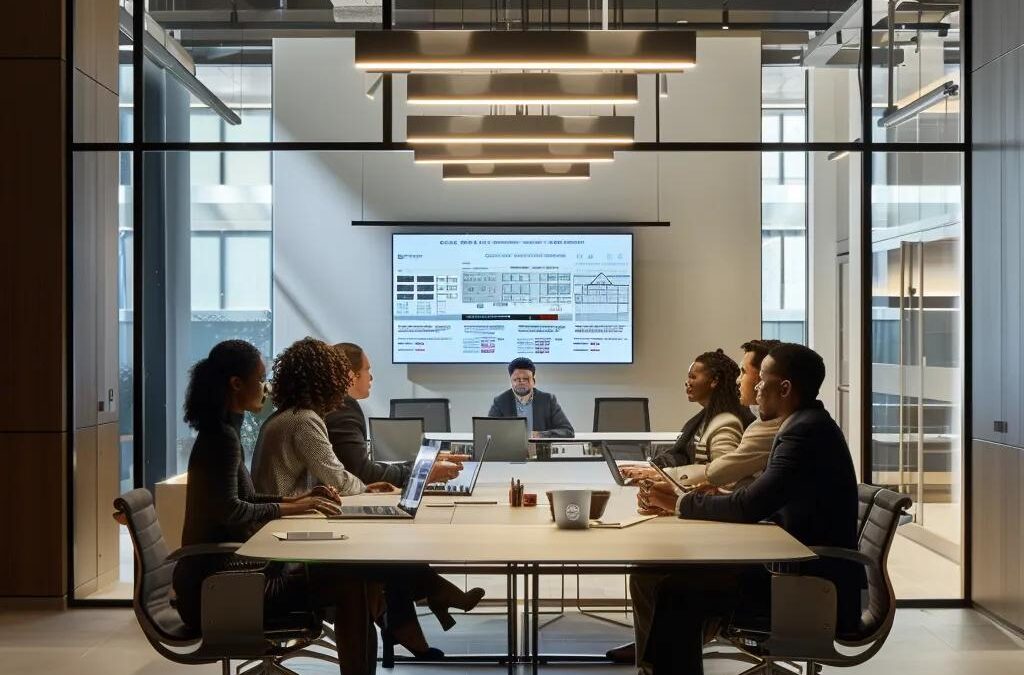Key Factors Influencing the Cost of Building Your Dream Custom Home Explained
Building a custom home is an intricate process that involves many expenses, detailed planning, and careful project management. Homeowners must understand factors that affect the final cost—such as land expenses, design details, material choices, labor costs, regulatory impacts, and customized features—to budget wisely and negotiate effectively with builders.
Examining Foundational Land Expenses That Affect Custom Home Prices
The cost of your custom home begins with the land, and several factors contribute to its price.
Assessing Raw Land Value and Location Premiums
Raw land value is driven by location and inherent desirability. Prime neighborhoods, top-rated school districts, and proximity to amenities command higher prices. For instance, land in a well-established area with low crime and high property values costs significantly more than in an emerging area. Future area development and market trends further influence cost.
Site Preparation and Development Charges to Anticipate
Before construction, land requires preparation. Expenses such as clearing trees, grading, and addressing drainage issues, alongside local government charges for road access and stormwater management, can add 10% to 20% to the land purchase price.
Understanding Utility Hookup Fees and Infrastructure Needs
Connecting your property to municipal services like water, sewer, electricity, and gas adds significant cost, especially if additional infrastructure—such as extending sewer lines or transformers—is needed. These fees are critical to ensuring the home meets modern standards.
The Impact of Local Zoning and Permit Requirements on Land Use
Local zoning laws and building permits limit the type and size of a home. Zoning affects setbacks, height restrictions, and density. Special permits or rezoning requirements can lead to delays and extra administrative costs that should be factored into the budget.
How Topography and Soil Conditions Influence Site Work Costs
The characteristics of the land, including slope, soil quality, and drainage, affect construction costs. Steep or uneven terrain calls for more complex grading and earthwork, while unstable soil or flooding risks may necessitate deeper foundations or specialized drainage systems, raising overall expenses.
How Design and Size Determine the Main Cost of Building a Custom Home
The architectural design and size are highly visible factors that directly influence project costs.
Square Footage and Its Direct Correlation to Overall Expense
The total living space is a primary cost driver. Although larger homes benefit from economies of scale (lower cost per square foot), increased square footage still means a higher overall expense. For example, expanding from 2,000 to 3,000 finished square feet can significantly raise the budget even with similar materials and craftsmanship.
Architectural Complexity and Structural Engineering Considerations
Unique layouts, unusual angles, coffered ceilings, and custom-built structures increase engineering requirements and material needs. Complex designs demand more planning and revisions, driving up costs beyond those for a standard floor plan.
The Number of Stories and Roof Design Financial Implications
Building multi-story homes increases available living space without enlarging the land footprint, but it also adds complexity with reinforced supports, staircases, and challenging roof designs. Intricate roofs with dormers or skylights require extra materials and time, further elevating expenses.
Custom Floor Plans Versus Stock Plans Cost Variances
Custom-designed floor plans generally incur higher fees due to the tailored approach compared to using pre-designed stock plans. The decision depends on budget and personalization goals, as custom plans typically result in a higher final cost.
Unique Design Features and Their Budgetary Impact
Features like open-concept layouts, indoor-outdoor transitions, vaulted ceilings, and integrated home automation systems enhance a home’s appeal yet add extra expenses. Luxury finishes such as high-end cabinetry and designer fixtures, while increasing costs, also contribute to long-term value when balanced with sustainable design elements.
Material Choices a Key Factor Influencing Your Building Budget
The selection of building and finishing materials plays a pivotal role in determining overall costs.
Comparing Framing Material Costs: Wood, Steel, or Concrete
Framing materials vary significantly in cost and maintenance. Wood is popular and cost-effective but may need upkeep. Steel frames offer durability in extreme climates, while concrete provides superior thermal mass and longevity at a higher initial cost. Homeowners should balance long-term durability with upfront expense.
Exterior Finish Selections and Price Points
Exterior finishes not only create visual appeal but also protect the structure against the elements. Options include brick veneer, stone cladding, stucco, and fiber-cement siding—each with distinct price points and maintenance profiles. For example, natural stone offers elegance and durability at a premium compared to more economical alternatives.
Interior Material Quality for Flooring, Countertops, and Cabinetry
High-quality finishes such as hardwood flooring, granite or quartz countertops, and custom cabinetry significantly influence the home’s interior appeal. While premium materials increase the cost, they also offer durability and may boost resale value. More affordable options like laminate or engineered wood provide a practical balance for many homeowners.
Window and Door Specifications and Their Cost Contribution
Energy-efficient windows with double or triple glazing and high-quality doors can improve insulation and security but often come with higher installation costs. The specifications selected must balance initial cost against potential long-term energy savings and curb appeal enhancements.
Insulation and Roofing Material Choices Affecting Long-Term Value
Quality insulation and roofing materials are essential for energy efficiency and durability. Options such as spray foam insulation and architectural shingles may require a higher upfront investment yet lead to improved indoor comfort and decreased future operating costs. These decisions impact both the home’s environmental footprint and long-term expenses.
Understanding Labor and Professional Service Costs in Custom Home Construction
Labor and professional services represent a significant portion of the overall construction budget.
General Contractor Fees and Project Management Expenses
General contractors manage the entire build, coordinating trades and handling potential challenges. Their fees often range from 10% to 20% of the total build cost, covering project management and mitigating delays and overruns.
Skilled Trades Labor Rates for Plumbing, Electrical, and HVAC
Specialized labor—such as plumbing, electrical, and HVAC work—is priced based on market demand and the complexity of the systems involved. Advanced installations, like home automation or energy-efficient heating systems, may require higher-skilled tradespeople and result in increased labor costs.
Architect and Designer Fees for Custom Plans
Architects and designers charge fees (typically 5% to 15% of the project cost) to develop custom home plans that address spatial planning, aesthetics, and modern trends. Their expertise is critical to creating a functional and visually appealing home layout.
Engineering and Surveying Service Charges
Before construction, professionals perform surveys, geotechnical studies, and structural assessments to ensure the land is suitable. These essential services help avoid future legal or structural issues, although they add to the initial costs.
The Effect of Labor Market Conditions on Building Prices
Labor market conditions, such as workforce availability and union rules, can impact costs. During shortages, wages may rise and timelines may extend. Conversely, a plentiful supply of skilled labor can help control expenses.
Navigating Regulatory and Administrative Factors That Affect Costs
Regulatory requirements and administrative factors also play a significant role in custom home construction expenses.
Building Permit Fees and Inspection Charges
Building permits, necessary for starting construction, come with fees that vary by jurisdiction and project size. Regular inspections ensure code compliance, and any delays or re-inspections can increase overall costs.
Impact Fees for Local Infrastructure Development
Local governments may charge impact fees to fund new infrastructure like roads or schools resulting from increased development. These fees can unexpectedly raise the overall budget if not planned for in advance.
Adherence to Building Codes and Potential Upgrade Costs
Evolving building codes may require upgrades such as enhanced fire protection, energy efficiency measures, or structural reinforcements. Although these improvements are crucial, they can add to the cost if existing designs need revisions for compliance.
Homeowners Association Guidelines and Associated Expenses
For projects within HOA-governed neighborhoods, additional fees and design restrictions may apply. Guidelines around aesthetics, landscaping, or exterior finishes can influence material choices and construction methods.
Environmental Regulations and Compliance Measures
Compliance with environmental regulations—related to water management, energy efficiency, and sustainability—may require extra permits or construction techniques. While such measures can raise initial expenses, they often result in long-term savings and increased property value.
Custom Features and Finishes Significant Influences on Final Home Price
Custom features turn a standard home into a dream home by adding unique functionality and aesthetic appeal.
High-End Appliance and Fixture Selections
Using premium appliances and luxury fixtures in kitchens and bathrooms significantly elevates costs but also adds durability, functionality, and resale value.
Smart Home Technology Integration Costs
Incorporating smart home features such as automated lighting, climate control, and security systems can boost efficiency and convenience. Although these systems require an upfront investment, they can lower long-term energy costs and enhance home security.
Landscaping and Outdoor Living Space Development
Well-designed outdoor spaces—with features like patios, decks, and custom pools—not only improve aesthetics but also add to property value. Quality landscaping can seamlessly extend indoor living areas to the outdoors and provide lifestyle benefits.
Custom Cabinetry, Built-Ins, and Millwork Expenses
Bespoke cabinetry and built-ins require skilled labor and high-quality materials, making them more costly. However, these features add unique character, functional storage, and enduring appeal.
Specialty Rooms and Unique Amenity Price Additions
Adding specialty rooms like home theaters, gyms, or wine cellars requires tailored construction and specialized equipment. Such luxury amenities drive the final project cost higher while offering personalized functionality.
Table: Summary of Key Factors Influencing Custom Home Costs
Before concluding, consider this summary table highlighting the main cost-driving factors:
| Factor Category | Key Cost Drivers | Impact on Budget | Example or Note |
|---|---|---|---|
| Land Expenses | Raw land value, site preparation, utility hookups | Can add 10-20% to land cost | Prime location commands higher premiums |
| Design and Size | Square footage, architectural complexity, multi-story | Directly proportional to living area | Custom floor plans and intricate roof designs raise costs |
| Material Choices | Framing, finishes, windows, doors, insulation | Varies with quality and durability | High-end stone or custom cabinetry increases expenses |
| Labor and Professional Fees | Contractor fees, skilled trades, architect fees | Often 10-20% of overall build cost | Delays or specialized installations add costs |
| Regulatory & Administrative | Permits, inspections, HOA rules, environmental compliance | Can add significant fees | Impact fees for local infrastructure development |
| Custom Features & Finishes | Appliances, smart technology, specialty rooms | Premium investments for enhanced luxury | Outdoor living spaces or home theaters boost costs |
Final Thoughts
A successful custom home project relies on understanding and managing a variety of cost-influencing factors—from land expenses and design complexities to material selections, labor, and regulatory fees. Each decision, whether it involves choosing energy-efficient insulation or integrating smart home technology, plays a role in balancing quality with budget. By making informed choices and planning for premium custom features, homeowners can achieve a personalized, high-quality home that meets both practical needs and aesthetic aspirations.
Frequently Asked Questions
Q: How does land value influence custom home costs?
A: Land value is determined by location, soil quality, and access to amenities, increasing project costs through higher premiums and additional preparation expenses.
Q: What role does design complexity play in the budget?
A: Complex designs, custom floor plans, and multi-story configurations require specialized engineering and materials, thereby raising overall expenses.
Q: How do material choices affect long-term home value?
A: Choosing durable, high-quality materials, such as premium cabinetry and energy-efficient windows, may increase initial costs but can enhance longevity and resale value.
Q: What impact do regulatory costs have on a custom home build?
A: Compliance with permits, inspections, impact fees, and building codes can add significant administrative expenses essential for legal and safe construction.
Q: Can luxury custom features significantly change the final price?
A: Yes, integrating smart home technology, specialty rooms, or upscale finishes adds to the cost while boosting comfort, functionality, and the home’s overall appeal.


Recent Comments